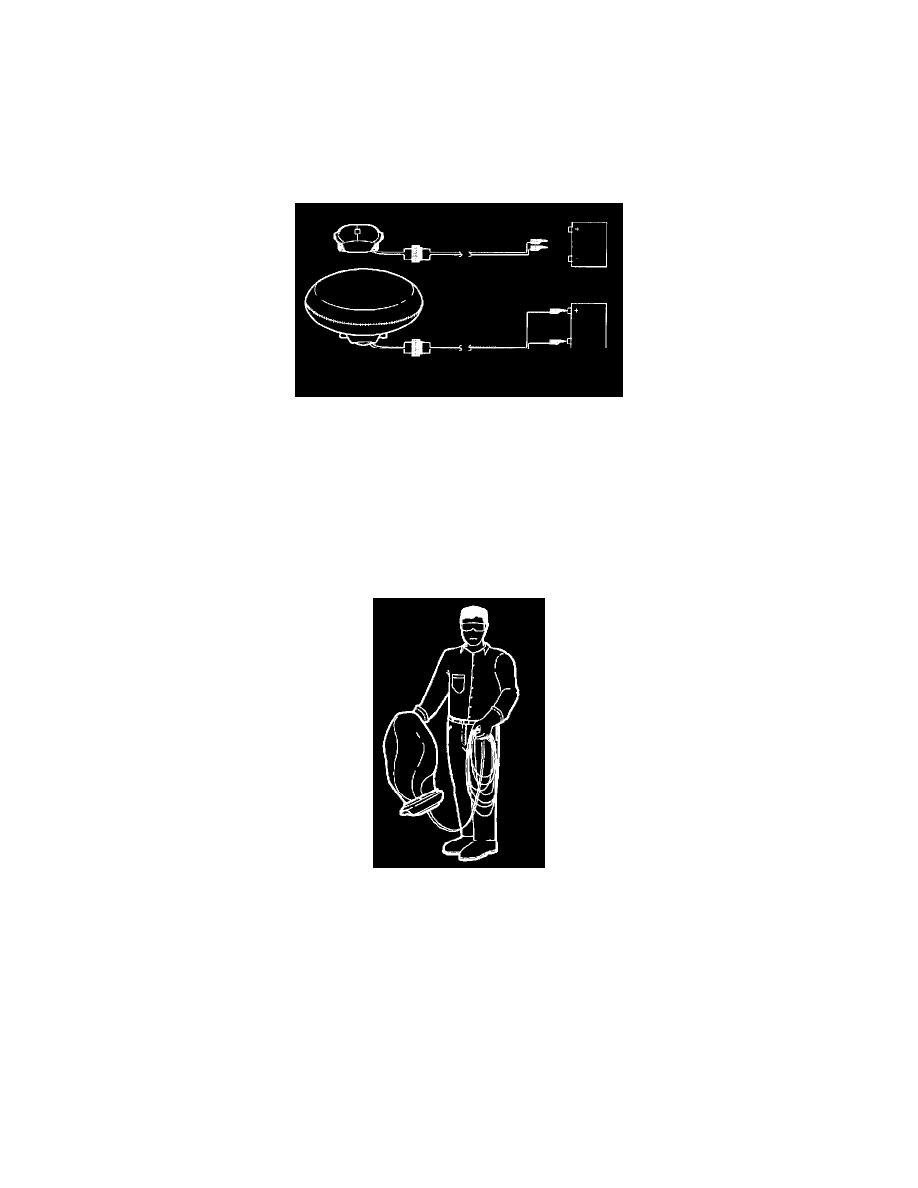LS2 V6-3.0L VIN R (2000)

10. Verify area around the inflator module is clear of all people, loose objects, or flammable material.
11. Verify inflator module is resting with its vinyl trim cover facing up.
12. Notify all people in the immediate area of your intention to deploy inflator module as the deployment will be accompanied by a substantial noise
which may startle the uninformed.
13. Separate the two banana plugs on the universal deployment harness that were shorted together in step 3. Refer to illustration.
IMPORTANT: When air bag deploys, the inflator module may jump approximately one foot in height. This is a normal reaction of inflator module
due to the force of rapid gas expansion inside air bag.
14. Connect universal deployment harness wires to power source to immediately deploy inflator module.
15. Disconnect universal deployment harness from power source.
16. Short the two universal deployment harness leads together by fully seating one banana plug into the other.
17. In the unlikely event that inflator module did not deploy after following these procedures, proceed immediately with steps 24 and 25. If the inflator
module did deploy, proceed with steps 18 through 23.
CAUTION: IMMEDIATELY FOLLOWING THE DEPLOYMENT OF AN AIR BAG, THE METAL SURFACES OF THE INFLATOR
MODULE ARE VERY HOT. DO NOT PLACE THE DEPLOYED INFLATOR MODULE NEAR ANY FLAMMABLE OBJECTS. WAIT
FOR ABOUT TEN MINUTES BEFORE TOUCHING ANY METAL SURFACE OF THE INFLATOR MODULE. DISREGARDING
THESE PRECAUTIONS MAY CAUSE FIRE OR PERSONAL INJURY.
After an inflator module has been deployed, the metal canister and surrounding areas of the inflator module will be very hot. Do not touch metal areas
of inflator module for about 10 minutes after deployment. If deployed inflator module must be moved before it is cool, wear gloves and handle by air
bag or vinyl trim.
After inflator module has been deployed, the surface of the air bag may contain a powdery residue. This powder consists primarily of corn starch (used
to prevent bag from adhering to itself over the life of the product) and by-products of the chemical reaction. Sodium hydroxide dust (similar to lye
soap) is produced as a by-product of the deployment reaction. The sodium hydroxide then quickly reacts with the atmospheric moisture and is
converted to sodium carbonate and sodium bicarbonate (baking soda). Therefore, it is unlikely that sodium hydroxide will be present after
deployment. As a precaution, however, gloves and safety glasses are recommended to prevent any possible irritation of the skin or eyes.
18. Put on a pair of shop gloves to protect your hands from possible irritation and heat when handling deployed inflator module. Safety glasses should
also be worn to protect your eyes.
19. Disconnect harness adapter from inflator module as soon after deployment as possible to avoid the possibility of damage to harness adapter or
universal deployment harness due to possible contact with the hot inflator module canister. The universal deployment harness is designed to be
reused. It should, however, be inspected for damage after each deployment and replaced if necessary. The harness adapter, SA 9414Z, may
